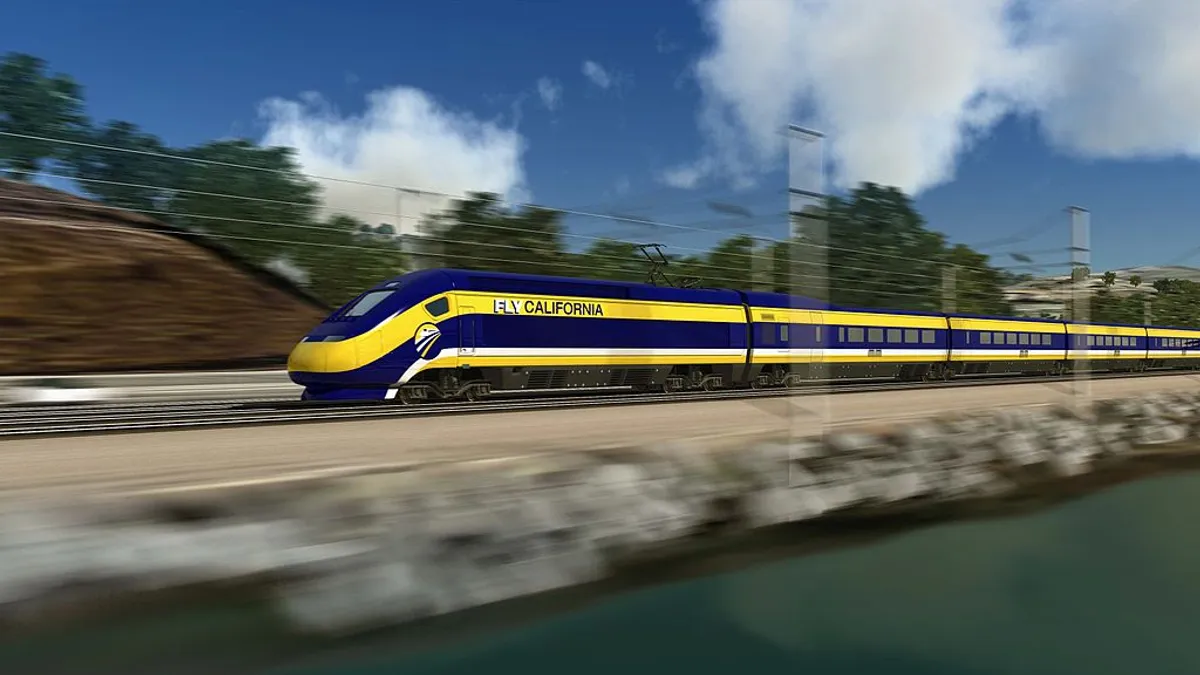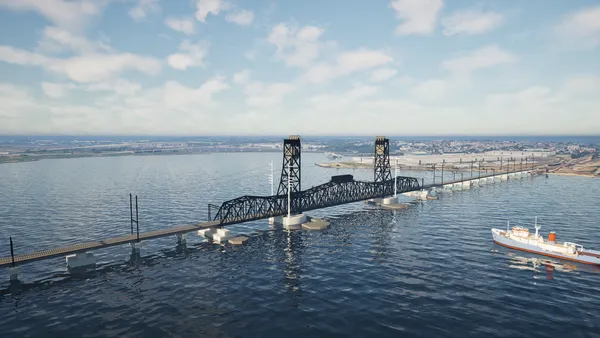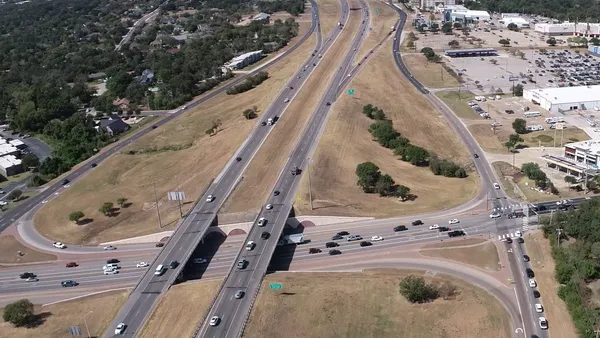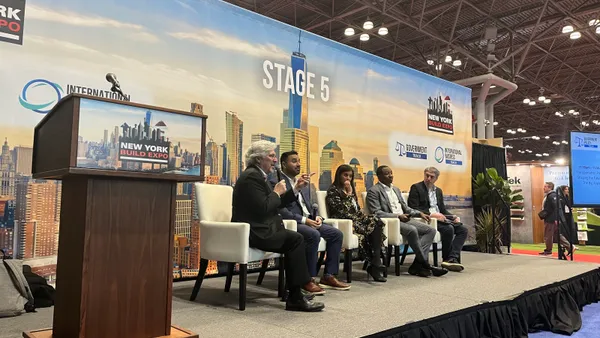Dive Brief:
-
Costs for the 119-mile stretch of a high-speed rail line planned through California's Central Valley are $1.7 billion higher than expected, so far, at $8 billion, according to the Los Angeles Times, citing a June report that was recently made public.
-
The California High-Speed Rail Authority (CHSRA) said the overruns are due to the increasing cost of land acquisition, the need to move underground utilities and discussions with freight rail companies around logistics. Track work is seven years behind schedule.
-
Higher costs for this portion of the project could push the entire so-called bullet train, which would run from Los Angeles to San Francisco, past its $64 billion estimate. Efforts to reduce costs could require the train to run slower, but a voter-backed funding bond requires the trip between the two cities to take 2 hours and 40 minutes.
Dive Insight:
The bullet train's finances and management have been under a microscope since the project's inception. But the scrutiny has been relentless since the LA Times ran a series of articles questioning the stability of the CHSRA's operations and the bullet train's future.
Developers of the proposed $12 billion, 240-mile high-speed rail line between Dallas and Houston are likely keeping an eye on the CHSRA project's progress.
Texas Central Partners has faced allegations that it was engaging in hardline tactics during land acquisition negotiations. The dispute drew in state lawmakers, who tried to kill the project through legislation but were ultimately unsuccessful. They did, however, pass a bill that prohibited the state from offering the project financial support.
Meanwhile, Texas Central has marched on with its plans. The developer announced in August that it had hired Fluor Enterprises and Lane Construction Corp. to provide pre-construction planning, design, engineering, scheduling, cost estimating and procurement services for the project.
Despite a few high-profile projects, high-speed rail has struggled to gain traction in the U.S. That is due in part to how this country regulates the technology needed to achieve the required high speeds. Companies that manufacture high-speed rail cars are based outside of the U.S., primarily in China. However, this country's Buy America laws and the Federal Railroad Administration's safety standards prevent them from being imported.












